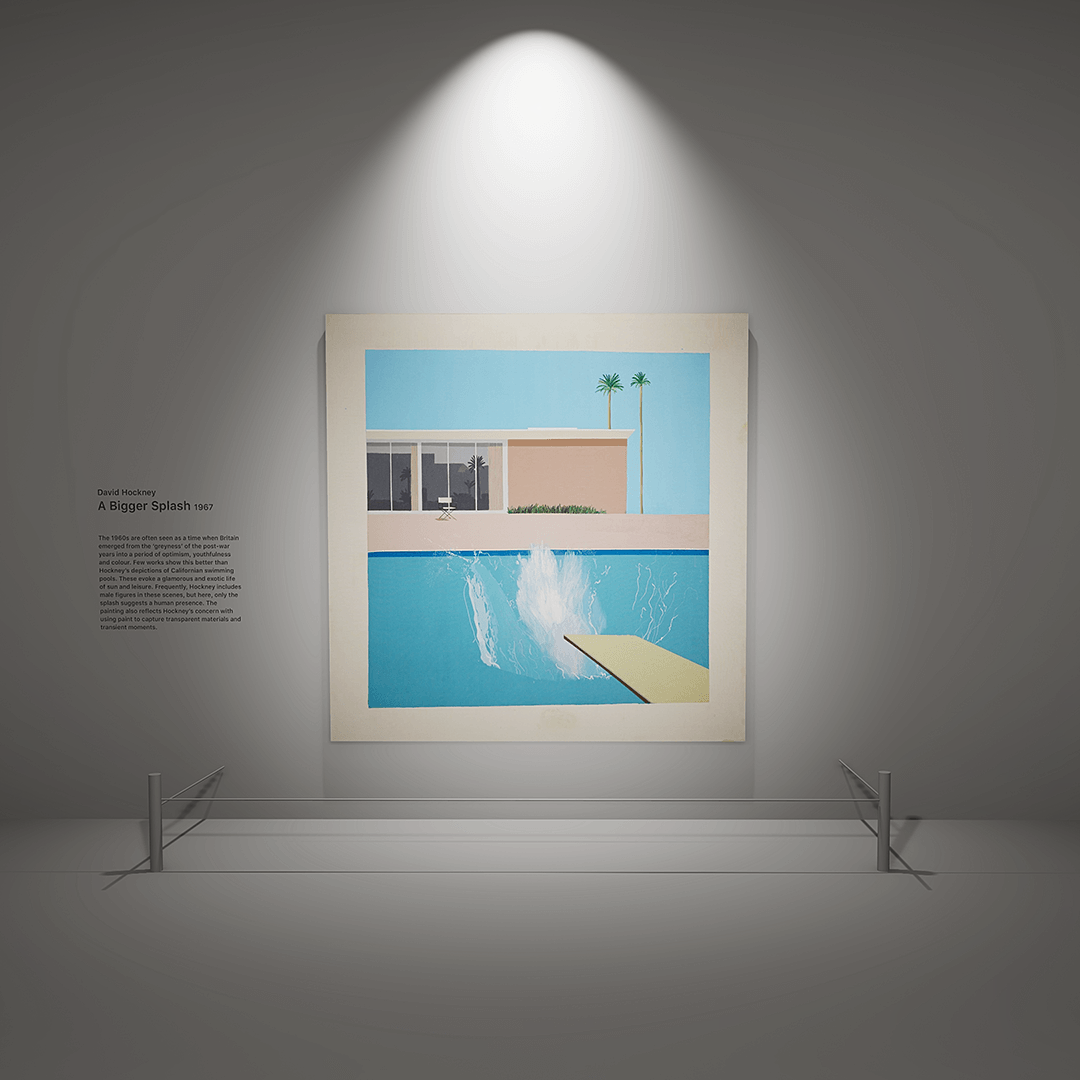
David Hockney (Britain, B. 1937)
A Bigger Splash
Acrylic on canvas
242.5 cm × 243.9 cm (95.5 in × 96.0 in)
painted in 1967
Collection of Tate Britain, London

Invite you to delve into Hockney's "pool paintings" series, in which, from 1964 onwards, the painter almost obsessively depicts swimming pools. But why such an obsession?
When he discovered California, and more specifically Los Angeles, where he settled in the 60s, Hockney, originally from England, was fascinated by the light, the shades of blue of the pools that, seen from the air, criss-crossed the ground. For him, swimming pools became a symbol of lifestyle and social status.
He produced three very similar paintings: "The Little Splash", "The Splash" (sold for over EUR 27,000,000 in 2020!) and the last one you see, "A Bigger Splash", which dates from 1967. In each case, no character but a house, a swimming pool from which water gushes from a plunge, and the Californian sky. Look here, in front of the house, a small folding chair reminiscent of those used by Hollywood film directors.
The technique is original: Hockney uses acrylic paint, which he first applies with a roller. Vertical lines (house, bay windows, palm trees) and horizontal lines (pool, house) are numerous, cutting the work into rectangles of different sizes. The highly geometric, brightly coloured work is reminiscent of Mondrian canvases.
The painting frame is reminiscent of the Polaroid photographs that Hockney also made.
In the manner of the Impressionists, but in a style close to pop art, the artist has captured an ephemeral moment in the representation of water. But who has just dived in? Unlike other Hockney canvases, in this one, the water is not transparent, nor does it reveal the swimmer. The painter plays on the ambiguity of the liquid element: a flat, motionless surface that can suddenly be set in motion, opaque or transparent; it hints at objects more than it reveals them.










